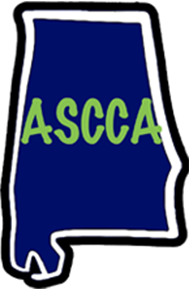We’ve had many speakers here this week talking to our counselors during orientation about different topics including health and safety, diabetes, autism, how to operate a wheelchair, etc.
Today, Amanda, who is a volunteer with the Spina Bifida Association of Alabama, spoke to the group about Spina Bifida – educating the counselors about what Spina Bifida is and what it has been like with her son who was born with it!
Please visit the Spina Bifida Association’s website to learn more about this birth defect and educate yourself!
What is Spina Bifida?
Spina Bifida is the most common permanently disabling birth defect in the United States.
What is Spina Bifida?
Spina Bifida literally means “split spine.” Spina Bifida happens when a baby is in the womb and the spinal column does not close all of the way. Every day, about eight babies born in the United States have Spina Bifida or a similar birth defect of the brain and spine.
What causes Spina Bifida?
No one knows for sure. Scientists believe that genetic and environmental factors act together to cause the condition.
What are the different types of Spina Bifida?
Occult Spinal Dysraphism (OSD)
Infants with this have a dimple in their lower back. Because most babies with dimples do not have OSD, a doctor has to check using special tools and tests to be sure. Other signs are red marks, hyperpigmented patches on the back, tufts of hair or small lumps. In OSD, the spinal cord may not grow the right way and can cause serious problems as a child grows up. Infants who might have OSD should be seen by a doctor, who will recommend tests.
Spina Bifida Occulta
It is often called “hidden Spina Bifida” because about 15 percent of healthy people have it and do not know it. Spina Bifida Occulta usually does not cause harm, and has no visible signs. The spinal cord and nerves are usually fine. People find out they have it after having an X-ray of their back. It is considered an incidental finding because the X-Ray is normally done for other reasons. However, in a small group of people with SBO, pain and neurological symptoms may occur. Tethered cord can be an insidious complication that requires investigation by a neurosurgeon.
Meningocele
A meningocele causes part of the spinal cord to come through the spine like a sac that is pushed out. Nerve fluid is in the sac, and there is usually no nerve damage. Individuals with this condition may have minor disabilities.
Myelomeningocele (Meningomyelocele), also called Spina Bifida Cystica
This is the most severe form of Spina Bifida. It happens when parts of the spinal cord and nerves come through the open part of the spine. It causes nerve damage and other disabilities. Seventy to ninety percent of children with this condition also have too much fluid on their brains. This happens because fluid that protects the brain and spinal cord is unable to drain like it should. The fluid builds up, causing pressure and swelling. Without treatment, a person’s head grows too big, and may have brain damage. Children who do not have Spina Bifida can also have this problem, so parents need to check with a doctor.

Located in Alabama on Lake Martin, Camp ASCCA offers campers a wide variety of traditional recreational and educational activities with a unique design for accessibility.

Sign up for our eNewsletter to keep up with events and happenings at Camp ASCCA!